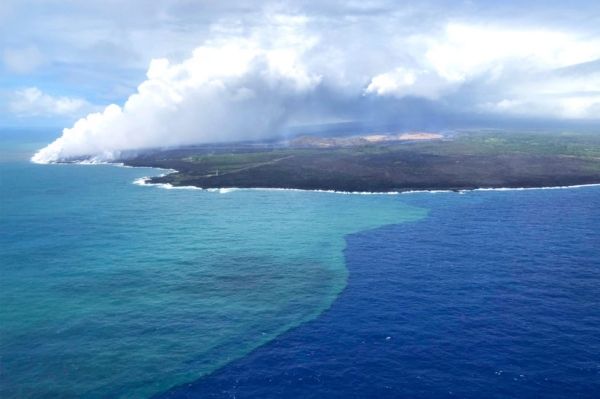Volcanoes are often feared for their destructive power, but a new study reminds us that they can foster new growth.
A year ago in July, researchers from USC Dornsife College of Letters, Arts and Sciences and the University of Hawaii rushed out on a boat to Hawaii’s famous Kīlauea volcano to collect samples of the surrounding North Pacific Ocean. They were trying to determine why so much algae had begun growing in the water as approximately 1 billion tons of hot lava poured in.
When looking at NASA’s satellite photos of the eruption, the scientists noticed that the ocean water around the volcano was turning green. The satellite had detected huge amounts of chlorophyll, the green pigment in algae and other plants that converts light into energy.
The new study, published Sept. 5 in the journal Science, shows that the green plume in the ocean around the volcano contained the perfect cocktail for plant growth — a fertile mix of higher nitrate levels, silicic acid, iron and phosphate.
Read more at University of Southern California
Photo: Scientists initially noticed that ocean water around the volcano was turning green by looking at NASA‘s satellite photos of the eruption. The green color turned out to be chlorophyll from the algae bloom. (Photo/U.S. Coast Guard)


